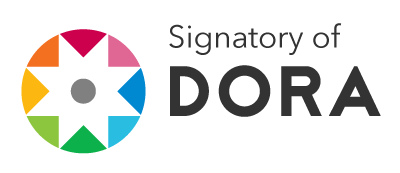ÓPTIMO DE COBERTURA VEGETAL EN RELACIÓN A LAS PÉRDIDAS DE SUELO POR EROSIÓN HÍDRICA Y LAS PÉRDIDAS DE LLUVIA POR INTERCEPTACIÓN
Resumen
Se establece, en una primera aproximación, el óptimo de cobertura en función de las pérdidas de suelo por erosión hídrica y de las pérdidas de lluvia por interceptación, en un matorral (romeral), en condiciones ambientales semiáridas mediterráneas, con un mismo tipo de suelo y dos tramos de pendiente de ladera, 11% y 25%. Se utiliza el promedio anual de nueve años de muestreo en parcelas de erosión, con tres intervalos de cobertura, 8%, 30% y 70%, y un 11% de pendiente; y con coberturas de 5%, 10%, 60% y 70%, en parcelas con un 25% de pendiente. Con ellos se establecen los valores de erosión (en porcentaje) respecto de la que se obtendría en un suelo desnudo y se correlacionan con el correspondiente grado de cubierta vegetal, haciendo lo mismo con el porcentaje de lluvia interceptada. Los resultados indican que en las parcelas con el 11% de pendiente, el óptimo de cobertura vegetal se sitúa en aproximadamente un 58%, mientras que este porcentaje aumenta hasta el 64% en las parcelas con pendiente del 25%. Por encima de esos valores, la pérdida de lluvia por interceptación pasa del 15% al 26%, mientras que la pérdida de suelo por erosión hídrica disminuye desde el 15% al 5% de la obtenida en suelo desnudoDescargas
-
Resumen1287
-
PDF842
Las obras que se publican en esta revista están sujetas a los siguientes términos:
1. El Servicio de Publicaciones de la Universidad de Murcia (la editorial) conserva los derechos patrimoniales (copyright) de las obras publicadas, y favorece y permite la reutilización de las mismas bajo la licencia de uso indicada en el punto 2.
2. Las obras se publican en la edición electrónica de la revista bajo una licencia Creative Commons Reconocimiento-NoComercial 4.0 (texto legal). Se pueden copiar, usar, difundir, transmitir y exponer públicamente, siempre que: i) se cite la autoría y la fuente original de su publicación (revista, editorial y URL de la obra); ii) no se usen para fines comerciales; iii) se mencione la existencia y especificaciones de esta licencia de uso.
3. Condiciones de auto-archivo. Se permite y se anima a los autores a difundir electrónicamente las versiones pre-print (versión antes de ser evaluada) y/o post-print (versión evaluada y aceptada para su publicación) de sus obras antes de su publicación, ya que favorece su circulación y difusión más temprana y con ello un posible aumento en su citación y alcance entre la comunidad académica. Color RoMEO: verde.







